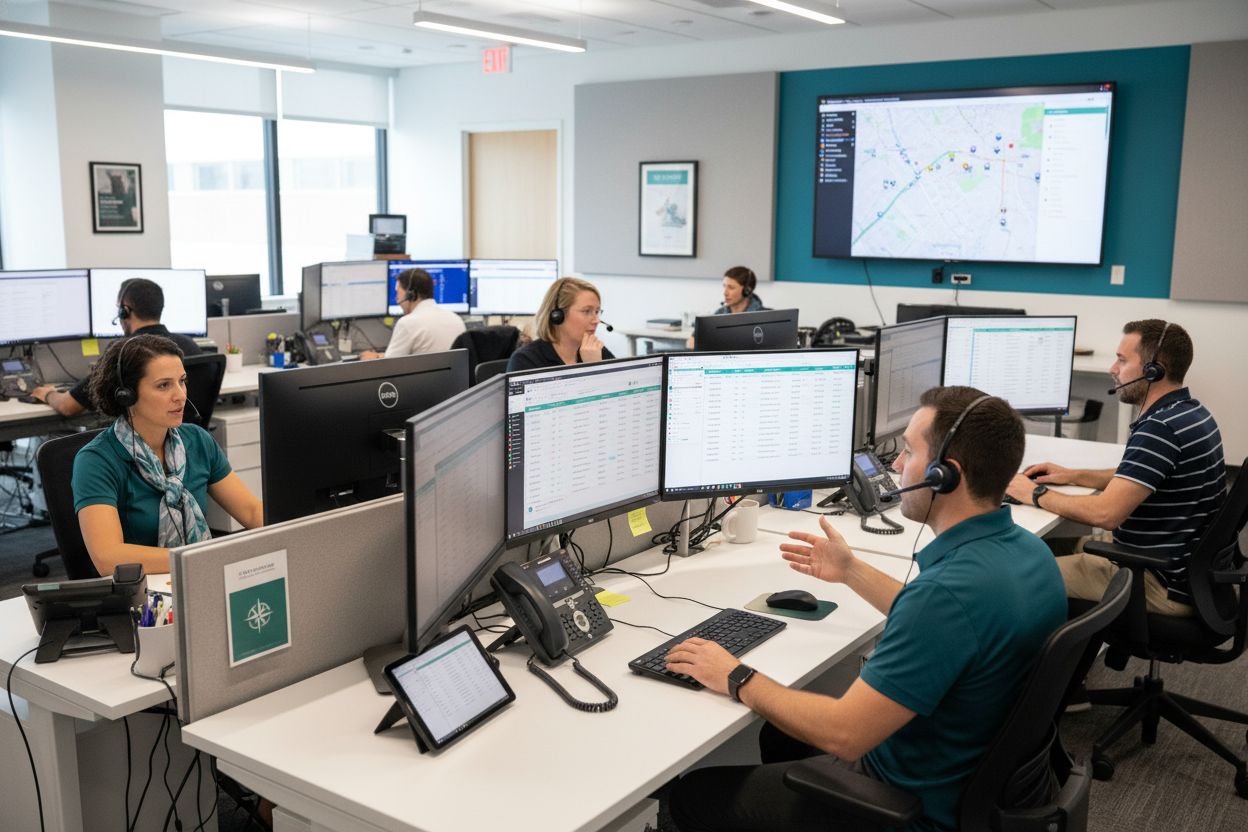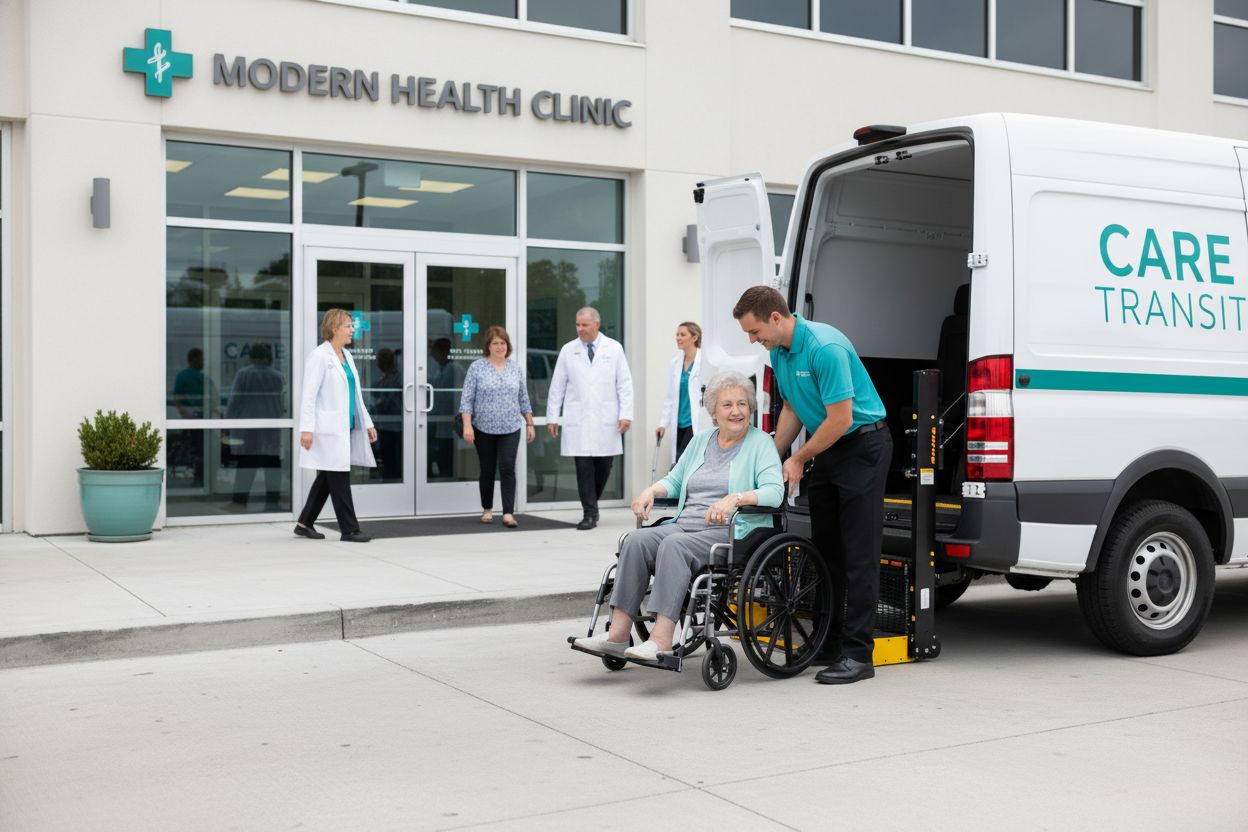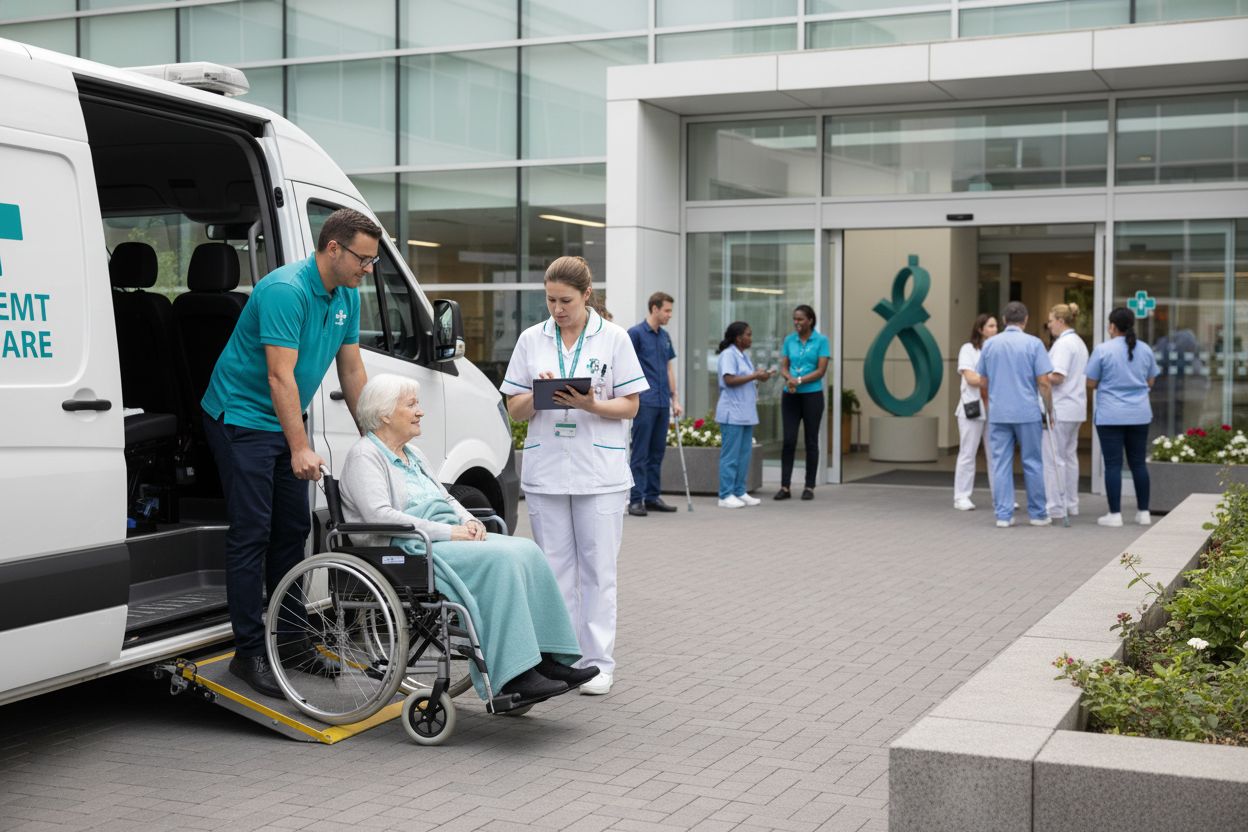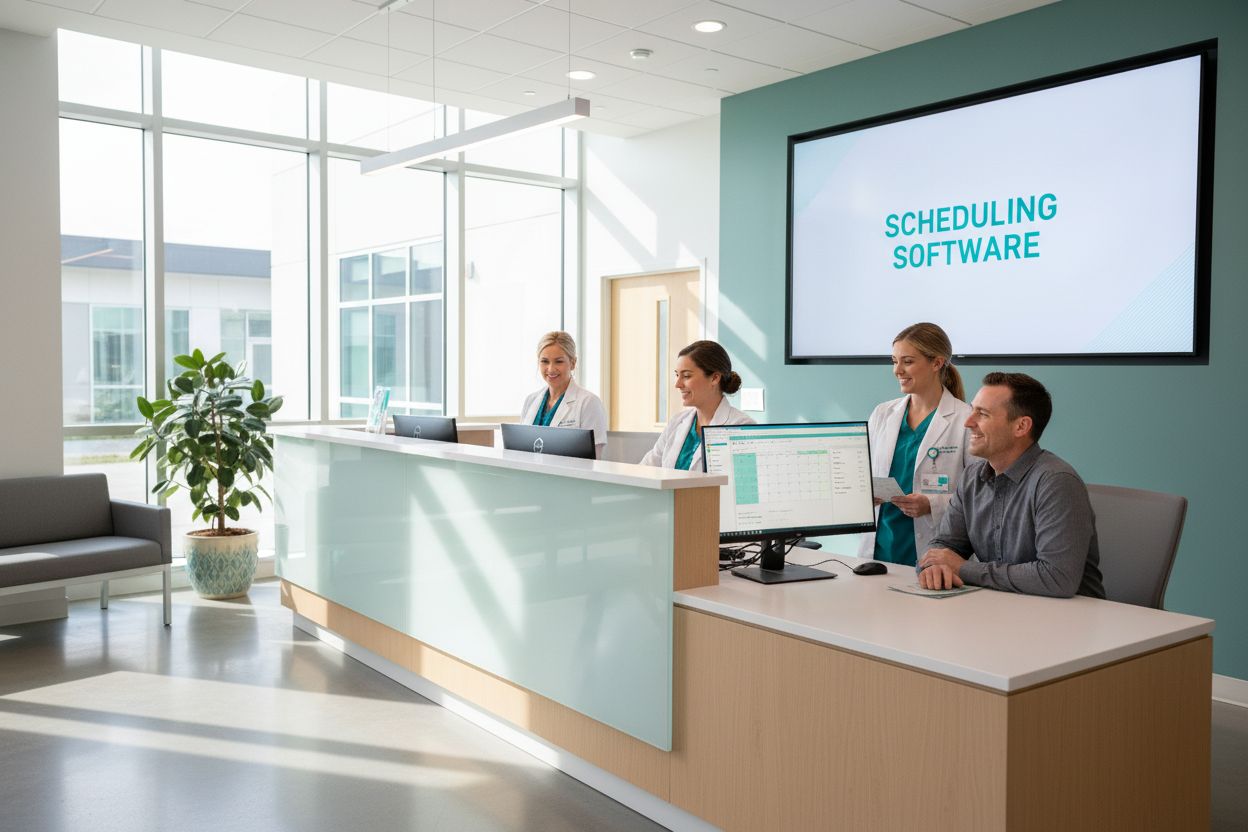7 Key Tips for Streamlining Private Medical Transport Services
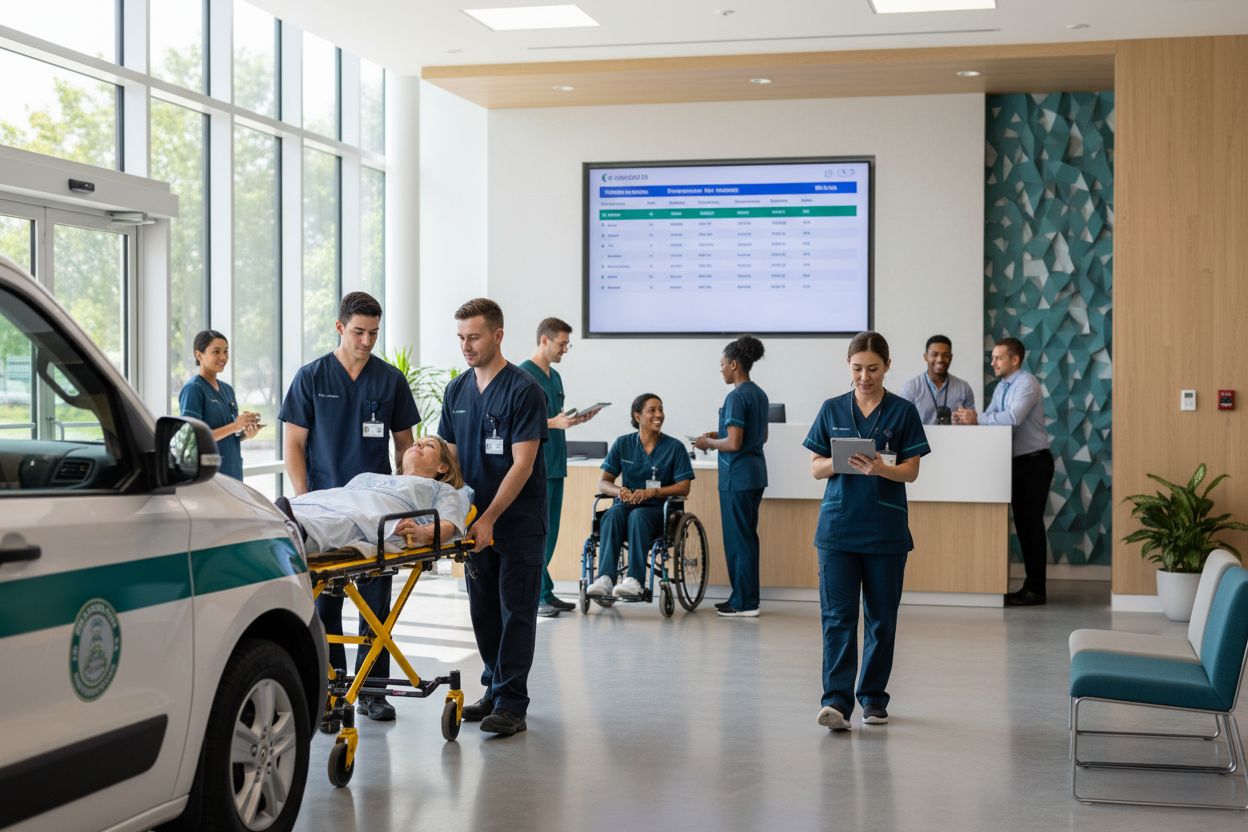
Every year, over 5 million patients in the United States rely on private medical transport to access critical care services. The difference between a safe, timely ride and a risky journey often comes down to how well these complex services are managed. With new technologies and best practices shaping the future of patient logistics, understanding the essentials of private medical transport empowers healthcare professionals to deliver safer, more coordinated experiences for every patient.
Quick Summary
| Takeaway | Explanation |
|---|---|
| 1. Optimize patient transport with digital scheduling. | Digital scheduling speeds up coordination, reducing scheduling time significantly and allowing staff to focus on patient care. |
| 2. Implement real-time tracking to enhance visibility. | Real-time tracking improves communication among stakeholders, reduces wait times, and optimizes resource allocation during patient transport. |
| 3. Automate workflows to minimize human error. | Workflow automation streamlines processes, eliminates manual tasks, and enhances accuracy in managing patient logistics. |
| 4. Prioritize compliance and data security. | Ensuring rigorous data protection measures and regular audits builds trust and safeguards patient information during transport operations. |
| 5. Leverage data analysis for continuous improvement. | Analyzing operational data helps identify inefficiencies, enabling organizations to enhance service quality and performance outcomes. |
Table of Contents
- Understand The Basics Of Private Medical Transport
- Leverage Digital Scheduling For Faster Coordination
- Optimize Vendor Management For Better Service
- Use Real-Time Tracking To Enhance Communication
- Automate Workflows To Reduce Delays And Errors
- Analyze Data To Drive Continuous Improvements
- Ensure Compliance And Patient Data Security
1. Understand the Basics of Private Medical Transport
Private medical transport services are critical lifelines in healthcare, bridging the gap between patients and necessary medical care across different facilities and locations. These specialized transportation services go far beyond simple point-to-point movement, representing a complex system of patient logistics that requires precision, safety, and technological integration.
At its core, private medical transport involves moving patients who require professional medical supervision or specialized equipment during transit. This can include ambulance services, non-emergency medical transportation (NEMT), air medical services, and specialized ground transport for patients with complex medical needs. The Commission on Accreditation of Medical Transport Systems plays a crucial role in establishing rigorous standards that ensure patient safety and operational excellence.
Modern private medical transport services now leverage advanced technologies to enhance patient care. Recent technological implementations like secure real-time data sharing platforms demonstrate how these services are evolving. Key technological components include:
- Secure blockchain-based patient information systems
- GPS tracking for precise route management
- Real-time communication platforms
- Advanced medical equipment integration
Successful private medical transport requires a multifaceted approach that combines medical expertise, technological infrastructure, and patient-centered care. Healthcare providers and transport services must collaborate closely to create seamless, safe, and efficient patient movement strategies.
Understanding these basics helps healthcare administrators, medical professionals, and patients recognize the intricate work behind what seems like a simple transportation service. Each medical transport mission represents a carefully orchestrated effort to deliver patients safely and efficiently to their required medical destinations.
2. Leverage Digital Scheduling for Faster Coordination
In the high-stakes world of medical transportation, time is more than just a metric. It is a critical factor that directly impacts patient care, operational efficiency, and healthcare provider performance. Digital scheduling represents a transformative solution for streamlining medical transport coordination.
Digital scheduling platforms revolutionize how medical transport requests are processed by replacing traditional manual communication methods with automated intelligent systems. Our technology is transforming how healthcare providers manage patient logistics, enabling rapid coordination and significant time savings.
Research demonstrates the profound impact of digital scheduling. One U.S. healthcare provider experienced a remarkable reduction in scheduling time per transport request from 45 minutes to just 4.5 minutes. This 10X efficiency improvement represents more than just time saved. It means clinical staff can redirect their energy toward direct patient care instead of administrative tasks.
Key advantages of digital scheduling include:
- Instantaneous communication between facilities
- Automated patient data integration
- Real-time tracking and status updates
- Reduced manual data entry errors
- Improved resource allocation
Secure digital platforms like the ITC-InfoChain system show how technology can automate patient data integration during transport requests. These platforms eliminate communication bottlenecks, ensuring smoother transitions and more efficient medical transport operations.
Implementing digital scheduling requires selecting a robust platform that prioritizes data security, ease of use, and seamless integration with existing healthcare systems. Healthcare administrators should evaluate solutions that offer comprehensive features while maintaining compliance with patient privacy regulations.
By embracing digital scheduling, medical transport services can transform their operational efficiency. The result is not just faster coordination but a more responsive, patient-centered approach to medical logistics.
3. Optimize Vendor Management for Better Service
Effective vendor management serves as the backbone of high-performing medical transport services, determining the quality, reliability, and safety of patient transportation. Understanding how to strategically select, evaluate, and manage transport providers can dramatically improve overall service delivery.
Vendor management in medical transport involves more than simply contracting service providers. It requires a comprehensive approach that ensures each vendor meets rigorous operational standards, maintains proper credentials, and consistently delivers exceptional patient care. Learn more about healthcare vendor management best practices to enhance your organizational strategies.
The Commission on Accreditation of Medical Transport Systems (CAMTS) plays a critical role in establishing vendor management standards. Their comprehensive auditing process evaluates the entire operational scope of medical transport providers, ensuring consistent service quality across different operators. This means your vendor selection process must go beyond surface-level assessments.
Critical elements of effective vendor management include:
- Comprehensive credential verification
- Regular performance evaluations
- Compliance tracking
- Standardized onboarding processes
- Continuous training requirements
Technological platforms now offer advanced solutions for vendor management. For instance, automated credential verification systems can track provider certifications and expiration dates, helping organizations reduce liability and maintain high operational standards. These systems provide real-time insights into vendor compliance, enabling proactive management.
Successful vendor optimization requires a strategic, data-driven approach. Healthcare administrators should implement robust screening processes, establish clear performance metrics, and leverage technology to streamline vendor interactions. Regular communication, transparent expectations, and continuous improvement frameworks are key to building strong vendor relationships.
By treating vendor management as a dynamic, strategic function, medical transport services can ensure consistently high-quality patient care and operational excellence.
4. Use Real-Time Tracking to Enhance Communication
In the complex world of medical transportation, communication can mean the difference between an efficient transfer and a critical delay. Real-time tracking technology has emerged as a game changing solution for healthcare providers seeking to maximize transparency and operational efficiency.
GPS and location tracking technologies now provide unprecedented visibility into medical transport operations. Explore how technology is transforming patient logistics to understand the full potential of these innovative systems. Real-time tracking goes far beyond simple location monitoring. It represents a comprehensive communication strategy that keeps all stakeholders informed and engaged.
Research in Non-Emergency Medical Transportation (NEMT) reveals remarkable benefits. Real-time GPS tracking can potentially reduce ride costs by 30 to 70 percent while simultaneously improving patient and provider satisfaction. These systems generate automated alerts, provide live estimated time of arrival (ETA) updates, and create a transparent communication ecosystem.
Key advantages of real-time tracking include:
- Precise location monitoring
- Automated status notifications
- Reduced patient wait times
- Improved resource allocation
- Enhanced communication between facilities
Hospital studies on Real-Time Location Systems (RTLS) demonstrate significant operational improvements. These systems can dramatically reduce patient wait times and optimize peak load management. By providing instant visibility into transport staff movements, healthcare organizations can make more informed operational decisions.
Successful implementation requires selecting a robust tracking platform that integrates seamlessly with existing healthcare information systems. Organizations should prioritize solutions offering secure data transmission, user-friendly interfaces, and comprehensive reporting capabilities.
Real-time tracking transforms medical transport from a black box of uncertainty into a transparent, predictable service. By embracing these technologies, healthcare providers can deliver more reliable, patient-centered transportation experiences.
5. Automate Workflows to Reduce Delays and Errors
In the high-stakes environment of medical transportation, even small inefficiencies can cascade into significant operational challenges. Workflow automation represents a transformative approach to eliminating manual bottlenecks and reducing human error in patient logistics.
Workflow automation is not just a technological upgrade. It is a strategic reimagining of how medical transport services operate. Explore the latest healthcare workflow automation trends to understand the profound impact of these innovative solutions.
Recent technological developments demonstrate the power of automated systems. Platforms like ITC-InfoChain leverage blockchain and smart contracts to streamline interfacility transport workflows. These advanced systems dramatically reduce communication errors during patient handoffs by creating secure, standardized data sharing protocols.
Key benefits of workflow automation include:
- Elimination of repetitive manual tasks
- Reduced administrative burden
- Increased accuracy in patient data management
- Faster transport coordination
- Enhanced compliance tracking
VectorCare’s platform illustrates the potential of workflow automation. By automating critical processes such as scheduling, credential verification, and coordination, these systems can substantially cut manual administrative efforts. Clinical staff are liberated from complex logistical tasks, allowing them to focus more directly on patient care.
Successful workflow automation requires a strategic approach. Healthcare organizations should evaluate solutions that offer seamless integration with existing systems, robust security protocols, and user-friendly interfaces. The goal is not just to replace manual processes but to create more intelligent, responsive operational frameworks.
By embracing workflow automation, medical transport services can transform from reactive systems to proactive, efficient patient logistics networks. The result is improved operational performance, reduced errors, and ultimately better patient experiences.
6. Analyze Data to Drive Continuous Improvements
Data analysis has become the cornerstone of modern medical transport services, transforming raw operational information into actionable insights that drive performance and efficiency. Understanding how to effectively leverage data can mean the difference between a good medical transport service and an exceptional one.
Operational data analysis provides a comprehensive view of transportation performance, revealing hidden patterns and opportunities for improvement. Explore the latest healthcare data insights for providers to understand how data can revolutionize your medical transport strategies.
Real-time tracking technologies generate a wealth of operational data that enable sophisticated performance monitoring. Recent research demonstrates the tangible benefits of data-driven approaches. A hospital logistics study revealed that implementing real-time rescheduling policies and advanced scheduling methods reduced transport response times by 5.7 minutes and late requests by 13 percent.
Key areas for data-driven analysis include:
- Transport response time metrics
- Vehicle utilization rates
- Patient transfer efficiency
- Cost per transport analysis
- Vendor performance tracking
Non-Emergency Medical Transport (NEMT) services particularly benefit from data transparency. By generating comprehensive operational reports, organizations can identify inefficiencies, optimize resource allocation, and continuously improve service quality. This approach supports greater accountability and performance optimization.
Successful data analysis requires robust technological platforms that can collect, process, and visualize complex operational information. Healthcare providers should invest in systems that offer intuitive dashboards, comprehensive reporting capabilities, and predictive analytics features.
Data is not just numbers. It is a strategic asset that can transform medical transport services from reactive operations to proactive, efficiently managed networks. By embracing a data-driven culture, organizations can consistently elevate their service quality and patient outcomes.
7. Ensure Compliance and Patient Data Security
In an era of increasing digital healthcare interactions, protecting patient data and maintaining regulatory compliance are not just best practices. They are fundamental responsibilities that define the integrity of medical transport services.
Patient data security represents a complex ecosystem of technological safeguards, regulatory standards, and organizational protocols. Learn more about healthcare regulatory compliance to build a comprehensive protection strategy for your medical transport operations.
The Commission on Accreditation of Medical Transport Systems (CAMTS) provides a critical framework for ensuring organizational compliance. Their rigorous standards cover documentation, operational protocols, and governance requirements that set the benchmark for patient safety and data protection.
Key compliance and security strategies include:
- Implement end-to-end data encryption
- Develop comprehensive privacy protocols
- Conduct regular security audits
- Train staff on data protection standards
- Utilize secure communication platforms
Advanced technological solutions like the ITC-InfoChain platform demonstrate the potential of secure data sharing. By employing encryption, patient data isolation, permissioned blockchain, and smart contracts, these systems maintain strict privacy standards during interfacility transport data exchanges.
Successful compliance requires a holistic approach that combines technological solutions, staff training, and continuous improvement. Healthcare organizations must view data security as an ongoing process rather than a one-time implementation.
By prioritizing patient data security and regulatory compliance, medical transport services can build trust, mitigate risks, and create a safer healthcare ecosystem for everyone involved.
This table provides a comprehensive summary of the key concepts and strategies for optimizing private medical transport services described in the article.
| Topic | Description | Key Benefits |
|---|---|---|
| Private Medical Transport | Involves safe transportation of patients needing supervision or equipment. | Enhanced patient care and safety. |
| Digital Scheduling | Implementing automated platforms for coordinating transport requests. | Reduced coordination time, increased operational efficiency. |
| Vendor Management | Strategic selection and evaluation of service providers. | Improved service quality, reliability, and safety. |
| Real-Time Tracking | Use of GPS for visibility into operations. | Reduced costs, improved satisfaction. |
| Workflow Automation | Automating tasks to eliminate inefficiencies. | Reduced errors, faster processes. |
| Data Analysis | Leveraging operational data for improvement. | Optimized resource allocation, performance enhancement. |
| Compliance & Security | Protecting patient data and ensuring legal compliance. | Mitigated risks, safer healthcare ecosystem. |
Transform Patient Transport Challenges Into Seamless Care Coordination
Are you frustrated by delays, miscommunication, and manual bottlenecks in private medical transport? The article showed how critical digital scheduling, real-time tracking, workflow automation, and secure data management are for streamlining every patient journey. If you want to cut administrative work, eliminate costly errors, and put patients first, now is the time to act. Find solutions that work across all types of healthcare settings and support every step, from scheduling to vendor management and data insights.
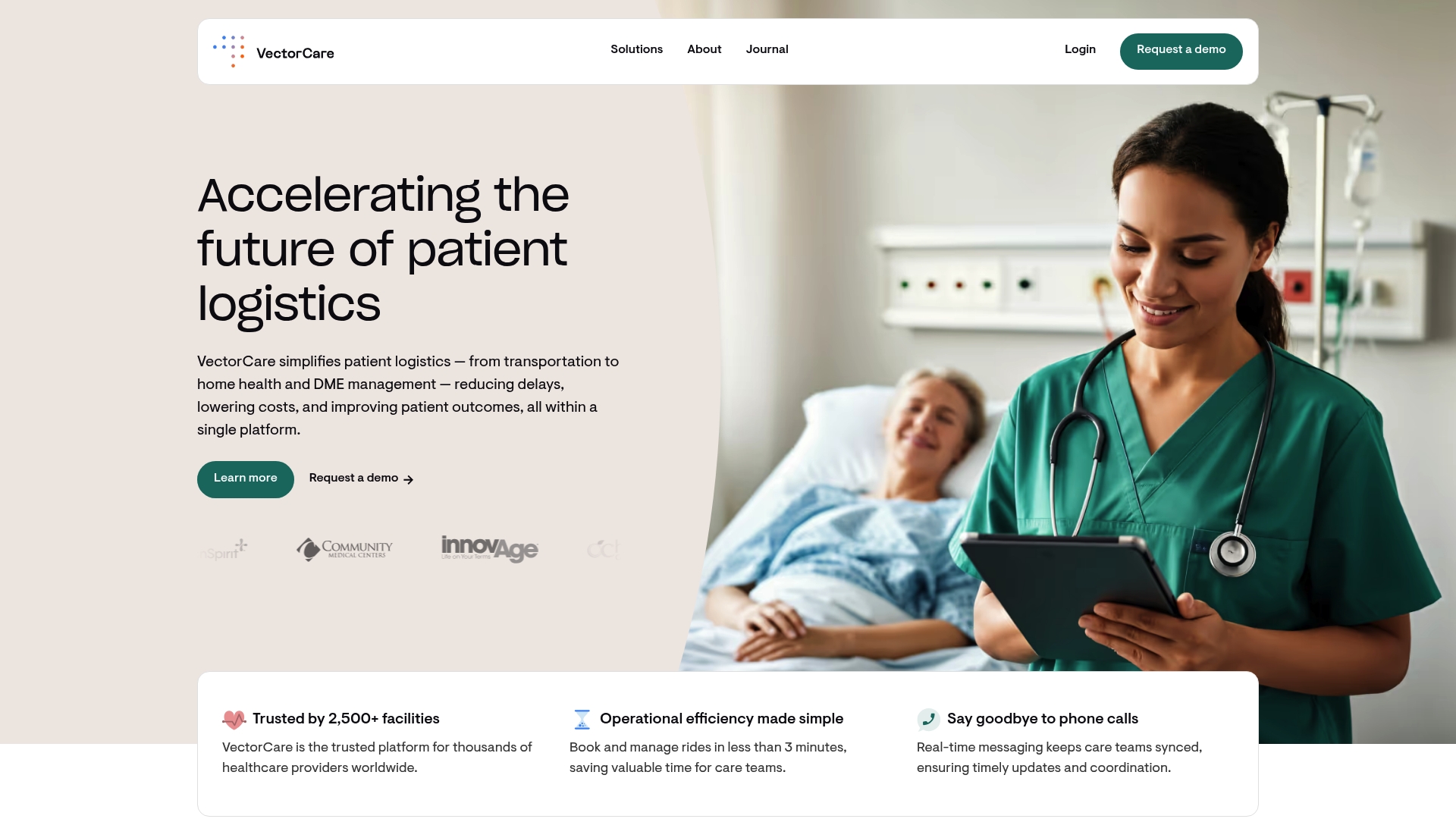
Take the next step toward efficient, compliant, and modern medical transport. Visit VectorCare to see how our integrated platform automates key processes, connects your teams with real-time updates, and delivers breakthrough results in patient logistics. Discover how you can start reducing delays and improving outcomes today.
Frequently Asked Questions
How can I leverage digital scheduling in my private medical transport service?
Utilize a digital scheduling platform to automate patient transport requests, which can significantly reduce scheduling time by up to 90%. Start by selecting a user-friendly platform that integrates seamlessly with your existing systems.
What are the key benefits of real-time tracking in medical transport?
Implementing real-time tracking can improve communication between facilities and reduce patient wait times. Aim to provide automated notifications and live updates to enhance transparency and efficiency.
How can I optimize vendor management for private medical transport providers?
Establish clear criteria for selecting and evaluating transport vendors, including credential verification and performance tracking. Conduct regular performance evaluations to maintain high service quality and ensure patient safety.
What steps can I take to automate workflows in my medical transport service?
Identify repetitive manual tasks in your processes and implement automated solutions to streamline these workflows. By doing this, aim to cut down administrative burdens and improve accuracy in patient data management within 30–60 days.
How can data analysis improve my private medical transport services?
Conduct regular analysis of operational data to identify inefficiencies and areas for improvement. Focus on key metrics such as transport response times to make data-driven adjustments that enhance service quality and reduce response times by around 5–10%.
What compliance measures should I implement to protect patient data in medical transport?
Ensure that your transport service follows strict data security protocols, including end-to-end data encryption and staff training on data protection. Regularly conduct security audits to maintain compliance and reduce risks associated with patient data breaches.
Recommended
- 7 Ways to Lower NEMT costs for Medicare Advantage plans | VectorCare
- Streamlining Non Emergency Patient Transport Services in 2025
- 7 Ways to Improve Outcomes for Medicare Advantage Members | VectorCare
- 7 Proven Strategies for Reducing Transportation Costs
- Arbeitsabläufe optimieren für Notfallpraxen und Therapeuten - MediCloud Med
